THE FAIRY TALE: La Belle et La Bête (Beauty and the Beast) by Madame de Villeneuve
THE SOURCES: Villeneuve with a couple academic sources: Betsy Hearne and Jerry Griswold
THE MEDIUM: Film
THE MOVIE: La Belle et La Bête (2014) from director Christophe Gans
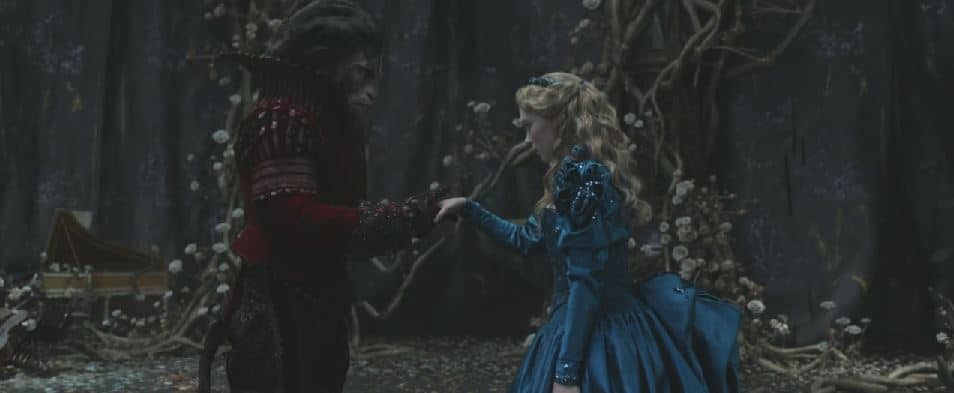
Photo: Pathe
After seeing and reading about this new French adaptation of Beauty and the Beast, I felt it was worth exploring in depth. Everyone who knows me (and maybe not even that well), can’t help but notice my undying obsession with everything about the Beauty and the Beast archetype from the animal bridegroom folklore, the literary version(s) we know as “Beauty and the Beast,” film, literary and television retellings, to “echoes of ‘Beauty and the Beast’ that can be seen in all its story cousins that tell tales about quasi-humans whether they be werewolves” or even “vampires” (Griswold 19). So, recently when I discovered that another French film adaptation of La Belle et La Bête was just about to be released in France (February 12th), I had to learn everything I could about Christophe Gans’ new film. Unfortunately, there is no English subtitle version announced just yet (no U.S. or UK release date) and every trailer is in French (thankfully all my French classes and knowledge of the tale paid off a bit). Still, even for those who can’t understand French at all, the trailer for Gans’ new adaptation is gorgeous and the visuals speak for themselves. Let us start there and trust me: this trailer should not be missed:
[et_lb_video video_url=”http://youtu.be/Br3sErpjMQo” css_class=””][/et_lb_video]Not only is it clear that Gans is staying true to the literary version of the tale: the rose, the father, full family (she is not an only child like the Disney film suggests), the loss of their fortune, etc. but after doing research, I discovered that the director is also adapting this from the FIRST literary version of “Beauty and the Beast” which is exciting because no one has adapted the original for the big screen before.
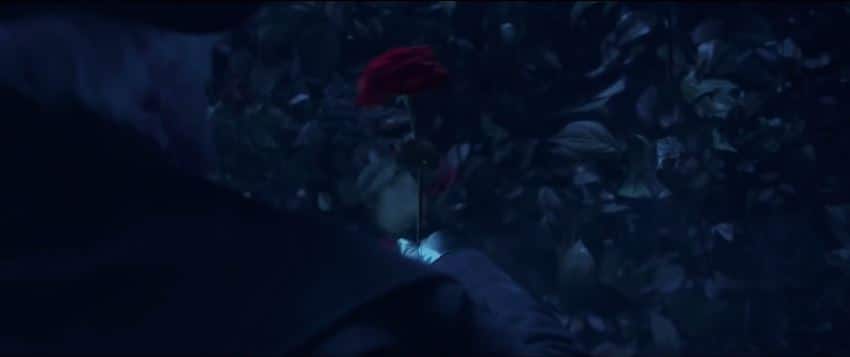
Photo: Pathe
Read about the adaptation in Christophe Gans’ own words:
“BEAUTY AND THE BEAST is the adaptation of a story by Madame de Villeneuve. Published anonymously in 1740 as La Jeune Américaine et les contes marins, it paints a portrait of Belle, a joyful and touching young girl who falls in love with the Beast, a cursed creature in search of love and redemption. In 1760, a condensed children’s version was published. It was from this version that Jean Cocteau and then Walt Disney drew their famous adaptations. Overshadowed, the original version by Madame de Villeneuve has never been adapted for the screen… until now!
BEAUTY AND THE BEAST is the story of a family going through a crisis, having lost all of its possessions when the father was ruined. The encounter – at first terrifying, but then voluptuous – with this mythical Beast provides our characters with an opportunity to get back on their feet. I like to think that this film is a metaphor for the situation that is currently afflicting the world. That is one of the advantages of fairy tales, to present an ensemble of values that endure through the ages.
BEAUTY AND THE BEAST speaks, among other things, of the power of dreams and love over materialism and corruption – a theme more topical now than ever. It was time to pay tribute to Madame de Villeneuve’s story: an amazingly contemporary tale, in which the poem of love is also a message of hope.”
-Christophe Gans

Photo: Pathe
Reading this official statement filled me with ‘hope,’ increasing my impatience for the film tenfold. It is clear he understands fairy tales, folk tales and why they endure and change with the times while staying true to the archetypes simultaneously, and especially the literary version of Beauty and the Beast by Villeneuve. Even finding a published translation of the original is hard to find these days because everyone always returns to the condensed children’s version by Beaumont. For those unfamiliar how the first tale goes, allow me to fill you in a little (and maybe even create a greater sense of excitement for the film’s possibilities).
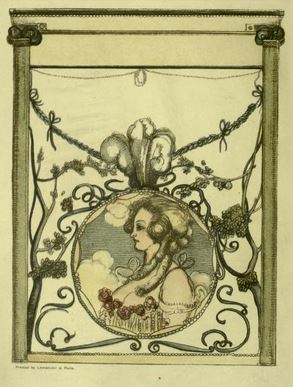
Beast: The Complete Fairy Story, translated from the French by Ernest Dowson with four
plates in colour by Charles Condor.
Beauty and the Beast by Villeneuve
“Beauty and the Beast,” retold by Madame de Beaumont in 1756, condensed and altered the story but some noticeable differences were lost in Beaumont’s literary and more popular retelling. Villeneuve, clearly from the lineage of “Cupid and Psyche,” includes sex, albeit very subtly and mostly metaphorically. Nevertheless, it was there (unambiguously) for this version was written for women and not children. This is not the didactic version by Beaumont that if I am being honest, is a little hard to read because it is so preachy. Villeneuve’s first version, on the other hand (while it still has its’ moments) is practically a novel but deals with themes that are closer to women’s rights and the control they had in marriage and their own body, something that really did not belong to them in the time period.
For instance, in the original, Beauty has a beloved dream-prince (really the Beast) that Beauty falls in love with (a plot point that has been confirmed to be in the new film for the first time ever). Every night, the dream-prince visits Beauty in her sleep. He tells her: “Wish, and all your desires shall be accomplished. I love you tenderly; and you, you alone can bring me happiness, if you can be happy yourself….Do not judge by what you see with your eyes only; above all, do not abandon me but release me from the terrible torment I endure” (Villeneuve 27). Beauty, admittedly not the brightest in this version (I’m sure this will change for the movie to not make her seem so dim), just believes the prince is imprisoned somewhere in the castle. She cannot put two and two together that the Beast and her dream-prince are one and the same, that only she can break the curse and help bring him redemption. In order to do so, she must choose to embrace her sexuality, the half that the Beast represents, by accepting the Beast’s proposal.
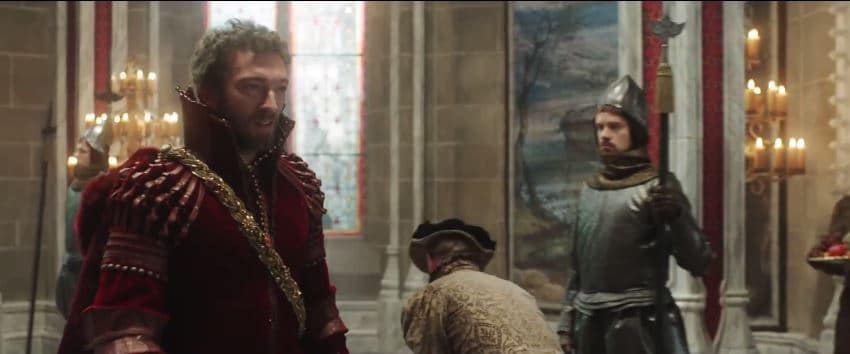
Photo: Pathe
Every night, the Beast “[asks Beauty] if she would allow him to sleep with her [not marry];” the answer is always ‘“No, Beast.”’(30). Relevant to 17th century marriage practices, “Beauty’s central conflict is the reconciliation of [this] love and duty” (Hearne 25). The sexuality is present when she finally accepts the Beast’s proposal but she openly does not want to sleep with the Beast even though she loves him, for “slight was Beauty’s impatience to find herself by the side of her most singular mate” (Villeneuve 60). Hesitant, Beauty “nevertheless got into bed” (60). What happens is I suppose up to the imagination though I tend to think the sleeping is more symbolic of a sexual awakening more than anything else as the text does not suggest anything physical (so no bestiality).

Photo: Pathe
Even Closer:
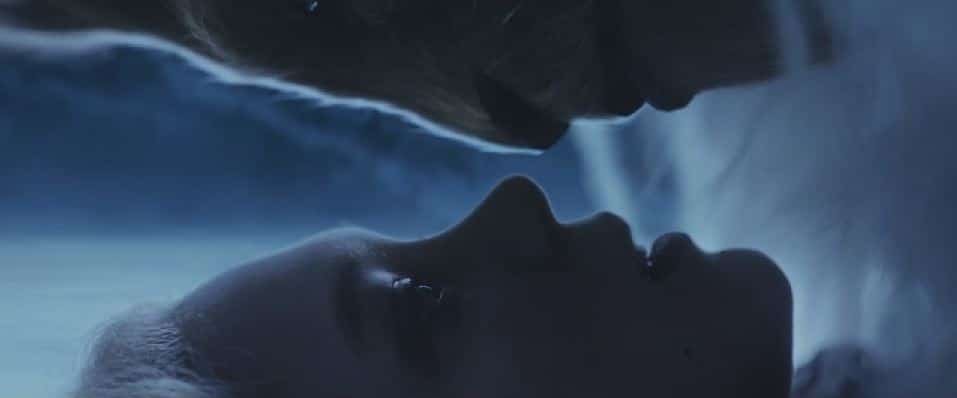
Her choice to love a beast (even if only through affection) brings Beauty what she desires as she uncovers this exciting unknown.
In the morning, the Beast finally transforms into her dream-prince so it isn’t with a kiss and it isn’t even when she claims to love the beast. The erotic nature of the scene is evident. Beauty’s choice to love the Beast merges with her developing sexuality as she soon “[recognizes]…that there was nothing incompatible in having at the same time a love for the unknown and an affection for the Beast, since they were one and the same person” (Villeneuve 62). She accepts the notion of both romantic love and sexuality. Her choice to love a beast (even if only through affection) brings Beauty what she desires as she uncovers this exciting unknown. Love, happiness, but also sexuality is now hers. The original, I would even claim (from my own perspective) is really about female empowerment in a time when matrimony was typically forced upon young women, and could even be quite a fearful experience. Here, the Beast gives Beauty complete control over her own choices. Gans could really have a lot of fun working off the material by Villeneuve, including this theme of agency.

Photo: Pathe
Another huge and important part of the story that was lost in Beaumont’s shorter version is this immense subplot of Beauty’s lineage, for her father is not her biological father and she is actually a princess and half fairy (the daughter of a King that was adopted by a merchant when her mother dies). There is a greater cast of characters and more backstory into both the Beast AND Beauty that will make for quite a fascinating film I think because it deals more with class and family themes. There is more at play than just transforming a Beast (although that is extremely vital to the story as well). Because fairies play such a huge role in the novella, magic also plays a bigger role. Seeing how this translates to the big screen will be fascinating.

Photo: Pathe
The entire story, including the Beast’s transformation into a Prince, his redemption, depends solely on Beauty’s choice to love a monster back and that is compelling.
Finally, one last important part of Villeneuve’s story of Beauty and the Beast is the beast himself. The Beast became too much of a costume in Beaumont’s retelling (a problem also slightly seen in Disney who was influenced more by Beaumont) rather than a monster for a monster the Beast most definitely has become (even if not extreme). He needs Beauty to help him get his humanity back, a theme now translated into modern tales of monsters in love and their intense desire for redemption. One of the most recent examples is in NBC’s Dracula where in the season finale, Dracula longs for the light through the love of Mina (the love story in this episode had a particularly stunning moment that really echoes back to the original themes found in “Beauty and the Beast”). The entire story, including the Beast’s transformation into a Prince, his redemption, depends solely on Beauty’s choice to love a monster back and that is compelling. While Beauty’s agency reveals a story of feminine empowerment, it also represents Beauty’s own sexuality and passion when she is drawn to the Beast’s wild nature. But don’t let me confuse you too much, this Beast is a gentleman and never forceful (which is part of the appeal); there is just more emphasis on transformation, the actual curse, and redemption than in Beaumont’s telling. Basically, it is Beauty’s choice to love the Beast that brings her happiness in the end. While there is certainly a cultural duty in this choice, it is one that brings her a life of love, a choice that saves and redeems her beast while also saving her from the common married life of the 17th century to a “wealthy [brute]” (Villeneuve 48).
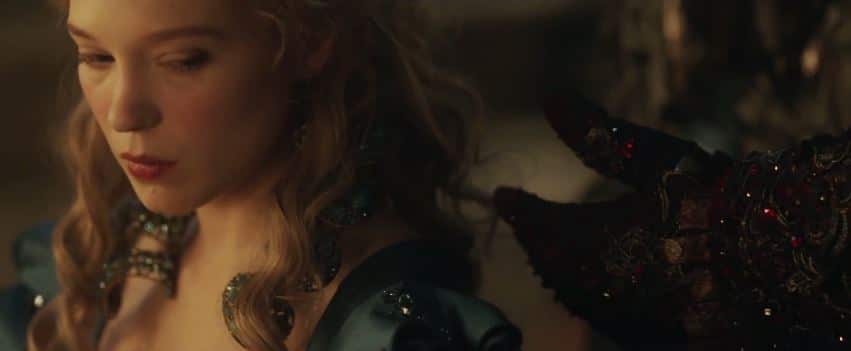
Photo: Pathe
Overall, the potential directions Cristophe Gans can take the film are tremendously thrilling and I can’t wait to see this on the big screen. Not since that other French adaptation by the genius Cocteau has there been such a faithful and artistic retelling for the screen and never has there been one that was faithful to the actual original source. Based solely on the director’s knowledge and the stunning trailer, I ask again: Could La Belle et La Bete (2014) be the best ‘Beauty and the Beast’ ever? Only time will tell I suppose and hopefully, that time won’t be too long… And, for any French readers out there, make sure to tell us your thoughts. I know I can’t be the only one waiting on baited breath…Finally, if none of the above was convincing enough, check out this AMAZING new music video about the film. It is epic:
NEW MUSIC VIDEO: Yoann Freget B.O.
[et_lb_video video_url=”http://vimeo.com/83302281″ css_class=””][/et_lb_video]Anyone else excited for this film’s release? What are your thoughts on the trailer? Sound off below…
References:
1. Griswold, Jerry. The Meanings of “Beauty and the Beast”: a handbook. Toronto: Broadview Press, 2004. Print.
2. Hearne, Betsy. Beauty and the Beast: Visions and Revisions of an Old Tale. Chicago: The University of Chicago Press, 1989.
3. Villeneuve, Gabrielle Susanne Barbot de Gallon (Madame) de. The Story of Beauty and the Beast: The Complete Fairy Story, translated from the French by Ernest Dowson with four plates in colour by Charles Condor. Internet Archive. University of Toronto, 2010. WEB: https://archive.org/details/storyofbeautybea00dowsuoft
RELATED:
My List of the Top 20 Fairy Tale Films
Read Rebecca’s take: Behind the Fairy Tale: Cinderella Versus Ella Enchanted
If you like vampires like me, read: Ten Reasons You Should Give NBC’S Dracula a Second Chance
Love French Cinema? Don’t miss my review of the fabulous and romantic film Populaire
ABOUT FAIRIES, WITCHES, AND GODS! OH MY!: This new column focuses on elements of fairy tales, folk tales and mythology used in literature, film and television. This may include posts from us or even guest posts from experts and/or authors talking about a tale or myth that influenced their story.
ARE YOU A ROMANCE FAN? FOLLOW THE SILVER PETTICOAT REVIEW:
 Our romance-themed entertainment site is on a mission to help you find the best period dramas, romance movies, TV shows, and books. Other topics include Jane Austen, Classic Hollywood, TV Couples, Fairy Tales, Romantic Living, Romanticism, and more. We’re damsels not in distress fighting for the all-new optimistic Romantic Revolution. Join us and subscribe. For more information, see our About, Old-Fashioned Romance 101, Modern Romanticism 101, and Romantic Living 101.
Our romance-themed entertainment site is on a mission to help you find the best period dramas, romance movies, TV shows, and books. Other topics include Jane Austen, Classic Hollywood, TV Couples, Fairy Tales, Romantic Living, Romanticism, and more. We’re damsels not in distress fighting for the all-new optimistic Romantic Revolution. Join us and subscribe. For more information, see our About, Old-Fashioned Romance 101, Modern Romanticism 101, and Romantic Living 101.


This looks a truly epic visual feast of a film … would definitely need subtitles though … most of my French was left behind at school 🙂
At least the story is familiar enough that it might help? I really am hoping for the subtitles.
I cannot wait for this film to be released with English subtitles! Heck, if I get desperate enough, I’ll even watch it without them!
oh my gosh!! i love both lea and vincent! i cannot wait to watch this.. i hope there’s a DVD soon at amazon. subtitles or not, i’m gonna watch this. epic love story and adventure! just in time for valentine’s day =)
I don’t think it will be anytime soon (unfortunately) but I’m looking forward to hearing what people in France will say about it…I agree about the subtitles. I am watching this SOMEHOW.
There’s a 1987 version starring Rebecca de Mornay that is relatively faithful to Villenueve, including her dreams about the prince, but if I remember correctly, it doesn’t include the backstory about her lineage and the fairies. I can’t wait to see this new version and see how Gans handles that! =D
I’ve heard of that version but never seen it. I’ll have to get it a look for sure.
I remember seeing the old black and white version on TCM a few years back,i really enjoyed it. I’m anxious to see this version !
I really loved the old film. I hope this one can come close…if at all possible.
Can someone please tell me what is the name of this song and the music video????
There’s an English version on Youtube
What are the lyrics in the song at the end? (In English)
. .X);;; it is no my language released so I really want to watch it with Eng subtitle but I can’t find it anywhere ….. TT^TT)) and sadly I don’t know french…….
I’m so desperate to see the French version, i’ve seen every version so far and I mean the one’s which even aren’t on IMDB; though i’m really depressed that Guillermo Del Toro turned down the possibility of Emma Watson Beauty and the Beast, Who will take on the official english version in the next few years? God there’s no one who loves this story as much as me in my neighbourhood, all my friends are like what ever but it makes me get butterflies, seriously the clip of her running on the ice in the 2014 La belle et la bete made me so excited. Disney kinda ruined the amazing story but it’s still OK.
OMG, I found numerous clips in german on youtube, yeah there in German but official clips which i’ve haven’t seen
I think the dancing first came from the 1976 version as i’ve never seen an earlier version which had it
I just watched this (got it for Christmas/birthday). It’s absolutely gorgeous! Watched it with French subtitles for hard of hearing, so I understood more than I would have with just audio, but I suspect I missed a lot of the subtleties of the dialogue. I don’t think it quite includes everything you said, but there are dream sequences about the prince, and forest gods and nymphs do play a part.
This is by far the best Beauty & the Beast adaptation I have ever seen. Loved it, it was perfect from start to finish. Every time she dreamed about the past, I felt like I was in her place discovering the real prince & his sad story, falling for him as she was. I laughed when he said “give me your hand”, to which he replied either were fine and she joked if he was giving her “the ring” (as in proposing)… even the beast thought funny but kept his pose, after all he was about to do one of the hardest things for him, letting her leave the palace (let me just say…I want that castle! *sigh*). Her dresses were amazing, the CGI effects were glorious, the original story is lovely, even with all the pain & suffering of the past mixed with the hurt & fear of the present, it teaches us more than the Disney’s version (which I adore! It’s the library, it gets to me all the time!).
I rated it 5***** and truly recommend it to those that haven’t seen it. 😉
Have you seen La Bella e la Bestia (miniseries Fiction RAI 1 in italian)? It’s Beauty and the Beast with a few spins. It doesn’t match up to this French version but I liked it.
The main characters are Belle, a merchant’s daughter and Prince Leon (aka The Beast). We get a brief introduction to Leon’s life before a tragedy occurred, “justifying” his horrible temperament but the main story revolves around the fact that Belle’s father owes Prince Leon money, but can’t pay, so he gives him his daughter until he’s able to pay. It will be a cat and mouse game for Leon, since he wants to seduce her. There are other characters such as Belle’s sister, Helene (Leon’s cousin), the Count (his uncle), the castle workers & villagers and most of all a ‘greenhouse’ with beautiful flowers. I’ll give it 4****.